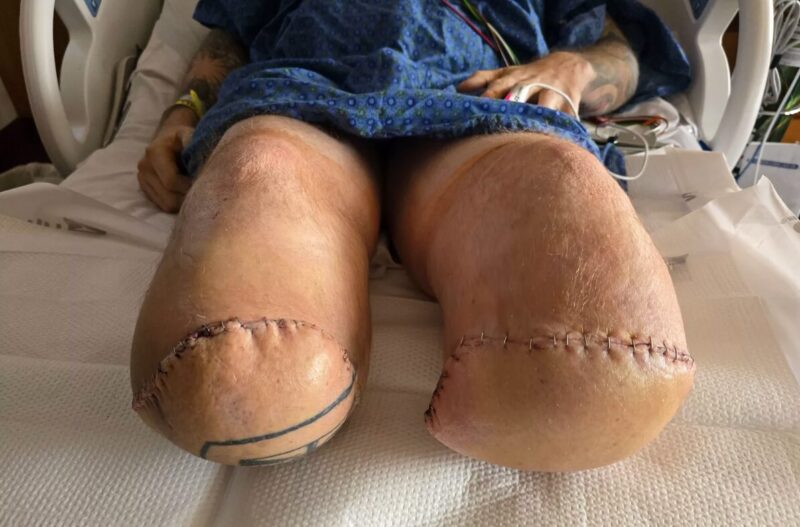In December, 40-year-old Max Armstrong went on a camping and hunting trip with friends. The trip had turned into a nightmare. A minor burn on Armstrong’s thumb escalated to a double leg amputation.
Armstrong is an experienced outdoorsman. In 2016, he completed a 151-day trek from Mexico to Canada and treated dozens of minor cuts, scratches, and burns along the way. On his latest outing, he accidentally touched a hot skillet while cooking and burned his thumb slightly. Armstrong thought nothing of it, applied a bandage, and continued his activities.
Two days later, he noticed swelling in his left leg. At first, he assumed that it was just an ankle injury that he hadn’t noticed and would improve in time. But the swelling intensified, his toenails turned purple, and the pain became unbearable. Realizing the severity of his condition, Armstrong went straight to the emergency room.

Photo: Max Armstrong
Induced coma
By the time he arrived, his eyes were rolling back in his head, and he was showing signs of confusion. He had sepsis. To try and control the worsening situation, doctors put him into an induced coma for six days.
Doctors diagnosed Armstrong with a severe infection caused by Group A Streptococcus bacteria, commonly known as strep A. This particular type was, unfortunately, the potentially deadly Invasive Group A Strep. It had entered his body through the burn on his thumb. This infection rapidly progressed to sepsis. While he was in a coma, the infection caused significant tissue damage, turning his feet black from necrosis.
After waking him up, the doctors told Armstrong and his family that there was a strong chance he would not make it due to the severity of the sepsis. They started mentioning amputations as a possibility to stop the infection from spreading up his legs. Initially, Armstrong was determined to keep his legs.
He told People magazine, “My mom was taking photos. And they [his feet] looked so black, and the veins were cooked. They just looked like they’d never be able to be used again.”
The necrosis was speeding up his legs, and he knew if it advanced any further, even a below-the-knee amputation would no longer be enough. At this point, he agreed to the amputation.

Photo: Max Armstrong
Hopes to hike again
On December 23, both legs were amputated. “Initially, when I woke up, I thought my legs were still there, and then I came to realize that they weren’t.”
By this time next year, he hopes to be hiking in the mountains again. For now, his dream is to walk around his home and take his dog for a walk.
Such outcomes are rare, but they underscore that severe freak infections from minor injuries are possible, so we need to seek medical attention promptly when small ailments behave strangely.





